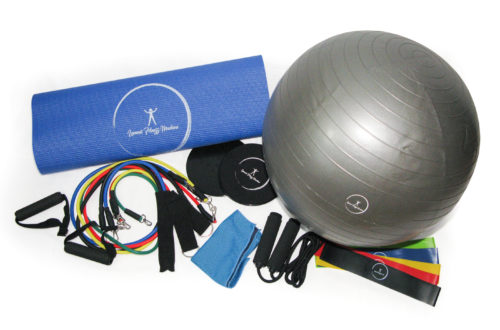In today’s world, many people struggle with unexplained digestive issues, skin problems, low energy, inflammation, or other chronic symptoms without knowing what’s causing them. While food is often a major factor, pinpointing specific triggers can be difficult. That’s where elimination diets come in.
Elimination diets, like Whole30, provide a structured way to remove common irritants from your diet, allowing your body to reset and giving you valuable insights into how different foods affect you. By temporarily eliminating certain foods and then systematically reintroducing them, you can identify triggers, improve digestion, boost energy, and create a healthier, more personalized way of eating.
Whether you’re considering Whole30, the Autoimmune Protocol (AIP), or another elimination diet, this guide will help you understand what they are, why they’re beneficial, and how to get started.
What Is an Elimination Diet?
An elimination diet is a temporary eating plan that removes foods commonly linked to allergies, intolerances, or sensitivities. These foods are eliminated for a set period—typically 21 to 30 days—allowing the body to heal from inflammation and reset. After the elimination phase, foods are gradually reintroduced one at a time to determine if they cause negative reactions.
Unlike fad diets focused on weight loss, elimination diets are primarily used for improving health, identifying food sensitivities, and reducing chronic symptoms like bloating, headaches, fatigue, joint pain, skin issues, and digestive discomfort.
Why Are Elimination Diets Important?
Many people consume foods that negatively impact their health without realizing it. Symptoms like fatigue, brain fog, bloating, acne, or joint pain may be linked to food sensitivities rather than just stress or genetics. Unlike food allergies, which cause immediate and severe reactions, food sensitivities can produce delayed or subtle symptoms, making them harder to identify.
Elimination diets provide a structured way to:
• Reduce inflammation by removing foods that trigger immune responses.
• Improve digestion by giving the gut time to heal from irritants.
• Identify food sensitivities by tracking reactions during reintroduction.
• Enhance energy levels by eliminating foods that cause sluggishness.
• Support weight management by focusing on whole, nutrient-dense foods.
• Improve skin health by cutting out inflammatory foods linked to acne, eczema, or rashes.
• Balance blood sugar by reducing processed foods and sugar.
Types of Elimination Diets
There are several types of elimination diets, each designed to target specific health concerns. Here are some of the most common ones:
1. Whole30
Whole30 is one of the most popular elimination diets. It eliminates added sugars, dairy, grains, legumes, alcohol, and processed foods for 30 days, focusing on whole, unprocessed foods like meat, seafood, vegetables, fruits, nuts, and healthy fats. After 30 days, foods are systematically reintroduced to assess their effects. Whole30 is often used to reset unhealthy eating habits, improve digestion, and identify food sensitivities.
2. Autoimmune Protocol (AIP)
AIP is a stricter elimination diet designed for people with autoimmune conditions. It removes potential inflammatory foods like grains, dairy, eggs, nightshades (tomatoes, peppers, eggplants), nuts, seeds, and processed foods. The goal is to calm inflammation, heal the gut, and reduce autoimmune symptoms before reintroducing foods gradually.
3. Low FODMAP Diet
The Low FODMAP diet is primarily used for those with irritable bowel syndrome (IBS) and digestive disorders. It removes fermentable short-chain carbohydrates (FODMAPs) that can cause bloating, gas, and digestive discomfort. Foods like onions, garlic, wheat, dairy, and certain fruits are eliminated, then reintroduced to determine tolerance levels.
4. Gluten-Free or Dairy-Free Diet
For those who suspect gluten or dairy intolerance, a simple elimination of these food groups can help determine if they are causing symptoms like bloating, headaches, or fatigue. Many people with celiac disease, lactose intolerance, or non-celiac gluten sensitivity follow this approach.
5. Elimination Diet for Skin Health
Certain foods are linked to skin conditions like acne, eczema, and rosacea. This elimination diet removes dairy, sugar, gluten, and processed foods to determine whether diet-related inflammation is affecting skin health.
6. Personalized Elimination Diet
Some people choose a customized elimination diet based on their specific symptoms. This involves working with a nutritionist or doctor to remove foods that may be problematic and tracking their impact over time.
Benefits of an Elimination Diet
Elimination diets offer a wide range of benefits, including:
1. Improved Digestion
By removing foods that irritate the gut, elimination diets can reduce bloating, gas, diarrhea, constipation, and acid reflux. Many people experience better digestion within just a few weeks.
2. Reduced Inflammation
Chronic inflammation is linked to many health conditions, including autoimmune diseases, arthritis, and skin disorders. Cutting out inflammatory foods can help calm the immune system and reduce symptoms.
3. More Energy & Mental Clarity
Many people feel sluggish due to blood sugar spikes, food intolerances, or processed food consumption. An elimination diet stabilizes energy levels and enhances mental clarity by focusing on whole, nutrient-dense foods.
4. Healthier Skin
Food intolerances can contribute to acne, eczema, rashes, and other skin issues. Removing dairy, sugar, or gluten often leads to clearer, healthier skin.
5. Fewer Headaches & Migraines
Certain foods, like dairy, gluten, or artificial additives, can trigger headaches and migraines. Identifying these triggers can significantly reduce their frequency and severity.
6. Better Sleep & Mood
Blood sugar imbalances, caffeine, and processed foods can interfere with sleep and mood. An elimination diet helps regulate hormones and neurotransmitters, promoting better sleep and emotional balance.
Reasons to Try an Elimination Diet
You may benefit from an elimination diet if you experience:
• Chronic bloating, gas, or digestive discomfort
• Frequent fatigue or sluggishness
• Unexplained joint pain or muscle aches
• Persistent skin issues like acne or eczema
• Frequent headaches or migraines
• Autoimmune symptoms or inflammation
• Brain fog, difficulty concentrating, or mood swings
If any of these symptoms are affecting your quality of life, an elimination diet could help identify food-related causes and improve your overall well-being.
How to Get Started with an Elimination Diet
Starting an elimination diet requires planning and commitment. Here’s how to do it successfully:
1. Choose the Right Approach
Decide which elimination diet best fits your symptoms and goals. Whole30 is great for an overall reset, while AIP or Low FODMAP may be better for specific health concerns.
2. Prepare Your Kitchen
Stock up on whole, unprocessed foods and remove foods that aren’t allowed during the elimination phase. Meal prep can help you stay on track.
3. Keep a Food & Symptom Journal
Track what you eat and how you feel each day. This will help you recognize patterns and pinpoint food sensitivities during the reintroduction phase.
4. Stick to the Elimination Phase
Follow the diet strictly for 21–30 days. Even small slip-ups can affect results, so commit fully for the best insights.
5. Reintroduce Foods Slowly
After the elimination phase, reintroduce foods one at a time every 3–4 days, noting any symptoms. This process helps identify problem foods.
6. Listen to Your Body & Adjust Accordingly
Use what you learn to create a sustainable way of eating that supports your health and well-being. You may find that some foods can be reintroduced, while others should be limited or avoided.
Is an Elimination Diet Right for You?
Elimination diets like Whole30 can be powerful tools for improving health, reducing symptoms, and learning how food impacts your body. Whether you’re struggling with digestion, energy, skin issues, or inflammation, removing potential triggers and systematically reintroducing them can help you create a personalized, sustainable diet that makes you feel your best.
Are you considering an elimination diet? What symptoms are you hoping to improve? Share your thoughts below!
Always remember, You are capable of amazing things and You are worthy of your wildest dreams!
Until next time, friend!
XOXO,
Valerie
Your Doula & Transformation Coach 🌿







